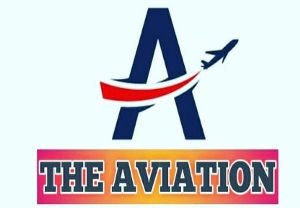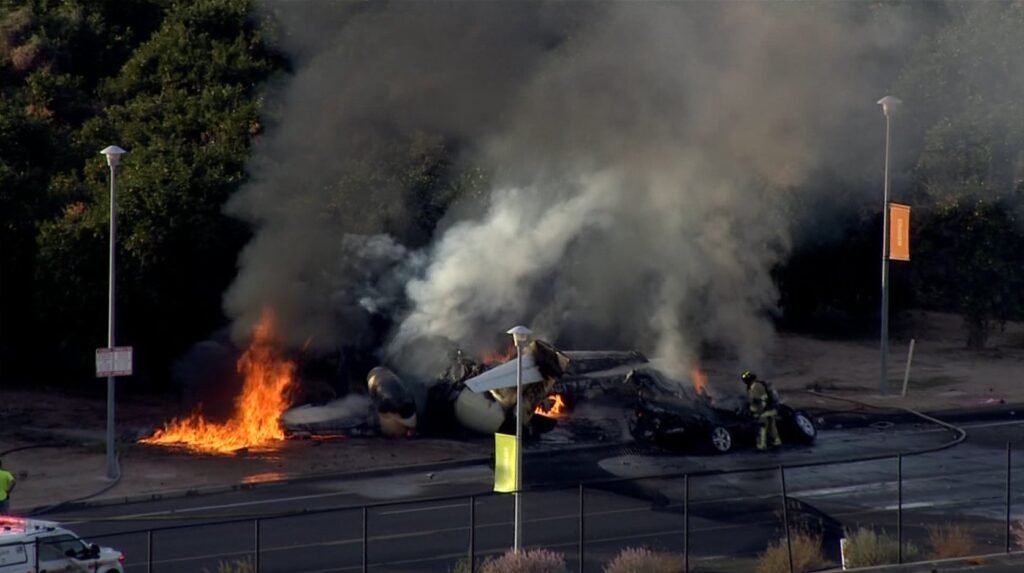Do You Know Why A320-family Aircraft is the Bestselling Narrow-body Aircraft in The World : The Aviation
Do You Know Why A320-family Aircraft is the Bestselling Narrow-body Aircraft in The World.
The A320 Family is the world’s most populars Single-aisle aircraft family as it is the preferred choice with airlines, from the low cost carriers for which it is now the aircraft of choice, to new business models taking benefits of new levels of performance and comfort,and with passengers.
With one aircraft in three sizes (A319, A320 & A321), the A320 Family is comfortably seating from 124 to 244 passengers and allows operators to fulfill the right aircraft size to demand covering the entire market, from low-to-high density routes to longer-range thin routes Only the A320 Family does offer containerized cargo increasing the airlines’ operational efficiency.
● Due to the widest single-aisle cross section, the A320 Family does offer containerized cargo as an option, providing unique flexibility to operators who can chose among bulk or container capability.
● A320 is a narrow-body (single-aisle) jet airliner who was the first member of the A320 family – it was launched in March 1984 and first flew on 22 February 1987.
● The first company to get A320 delivered was Air France. The family was pioneers of digital fly-by-wire flight control systems and side-stick controls in commercial aircraft.
● Orders and Deliveries
15 522 orders from 300+ customers
(business case at launch : 600+ aircraft)
9 313 deliveries
6 202 in backlog
● In-service status
251+ million flight hours / 136+ million flight cycles since Entry Into Service
99.6 percent Operational Reliability
(last 12 months)
An A320 takes-off or lands every 2 seconds
There are more in service than any other passenger airliner
● Speed of A320 Maximum Operation Mach Number of the airplane is 871 km/h.
● A320 can carry up to 180 passengers, while 150 make the standard.
● The price of Airbus A320 in 2017 is about $99.0 million
● A320 Family production rate evolution
October 2009: rate 34
2019: rate 60
Rate 63 is targeted in 2021
A320neo FAMILY: Unbeatable fuel efficiency
__________________________________
● 60% market share vs. 737 MAX (end June 2019)
● Orders and Deliveries
7 395 orders from 100+ customers
1 248 deliveries
96 operators (60 CFM, 36 PW)
6 147 in backlog
● In-service status
4.3+ million flight hours
2.2+ million flight cycles
________________________________
● The best keeps getting better, creating even more value for airlines A320neo offers unbeatable efficiency Incorporating Sharklets, new more fuel-efficient engines and latest cabin innovations.
● Many benefits of the A320neo compared to A320ceo are:
o 20% fuel burn reduction per seat
o 5% lower airframe maintenance costs
o 14% lower cash operating costs per seat
● New generation engines option:
o Pratt & Whitney’s PurePower PW1100G-JM geared turbofan
o CFM International’s LEAP-1A
● A320neo offers between 4-6% lower fuel burn per seat compared to the Boeing 737 MAX8.
● A321neo offers 7% lower fuel burn per seat compared to the Boeing 737 MAX10.
● A321LR is offering long range capability achieving up to 4,000nm (7400km).
● The A321LR can carry up to 244 passengers in a single-class configuration, while cabin
flexibility allows to offer also a three-class configuration with full flat premium seats or a
typical two-class configuration with up to 206 seats.
It is improved with a maximum take-off weight of 97 tonnes.
● Community benefits –
Nearly 50% reduction in noise footprint (20 EPndB lower noise than the latest Stage 4) .
5,000 tonnes less CO2 emissions per year per aircraft.
NOx emissions 50% below current industry standard.
A320 Family Amazing facts
● There are 340,000 parts in the A320 aircraft.
● About three A320 Family aircraft leave every day one of the A320 Family final assembly
lines all over the world.
● It takes about one month to complete the final assembly of an A320 Family aircraft.
● Production lead time of an A320 from the first piece manufactured to the delivery of the
aircraft is around 1 year.
● A320 operations are very similar to breathing.
● Every time you take a breath an A320
Family aircraft takes-off or lands (every 2 seconds).
● Fan diameter of the A320neo Family engines is 2,05 meters.
● It is larger than most business jet cabins cross section (such as Bombardier Learjet).
● At the end of its lifecycle, 85% of an A320 can be recycled in terms of weight. This figure
will go up to 95% in the next few years.
● At its maximum weight the A321LR weighs more than 7 London Buses.
● The A320 can accelerate from 0 to 200 km/h in less than 20 seconds. This is faster than
a 305 HP Ford Focus RS.
●Electric power produced by both A320 Family engines would be sufficient to provide electricity for 30 standard apartments.
● The high pressure spool of A320 Family engines during take-off phase turns 11 times
faster than a washing machine during the spin cycle.
● A320 Family Assembly Plants Final assembly of the A320 family takes place in Toulouse, France, and Hamburg, Germany, the first two A320 plants operated by Airbus.
Know More about Airbus Aircraft-:
01) Which airlines operate Airbus aircraft?
Airbus aircraft are operation in more than 400 operators around the world.
02.Who makes Airbus engines?
Airbus commercial aircraft are powered by engines supplied by leading powerplant manufacturers: CFM International, Engine Alliance, General Electric, International Aero Engines, Pratt & Whitney and Rolls-Royce.
03.Can airbus increase production?
In future Airbus can increase and decrease the production rates of its various aircraft families based on global demand.
04.How many passengers can fly on Airbus aircraft?
Airbus aircraft families can carry from 100 to more than 850 passengers.
05.How many employees does Airbus have?
In Airbus employs more than 134,000 people across its divisions and businesses.
06.Are Airbus aircraft safe?
Always Airbus adhers to industry safety standards in designing and building its aircraft, and supports their safe operation in service around the world.
07.Where are Airbus aircraft manufactured?
Airbus has aircraft and helicopter final assembly lines across Asia, Europe and the Americas; its commercial aircraft final assembly lines are in France, Germany, China, the United States and Canada.
08.What is Airbus?
Airbus is the largest aeronautics and space manufacturere company in Europe.
09.When was Airbus created?
Airbus was officially founded in 1970 by three founding European countries: France, Germany and the UK.
10.How are Airbus aircraft produced?
Airbus aircraft are the result of the company’s creativity and innovation, developed in cooperation with partners and suppliers around the world.
11.How did Airbus start?
With the foresight of its founders, Airbus started by developing the A300 – a pioneering twin-engine widebody commercial aircraft.
12.How many Airbus aircraft are in service?
Currently More than 11,000 Airbus commercial aircraft were in operational service at the end of 2019.
13.How many countries is Airbus active in?
Airbus is a international company & 180 locations and 12,000 direct suppliers globally.
14.Who founded Airbus?
Roger Béteille, Henri Ziegler, Franz-Josef Strauss and Felix Kracht are known as the “fathers” of Airbus.
15.Which Airbus aircraft have four engines?
Only The A380 and A340 are the four-engine members of Airbus’ commercial aircraft product line.
16.Why does Airbus use joystick?
The sidestick provides the optimum means for pilots to operate Airbus’ fly-by-wire flight controls.
17.Why does Airbus use sidestick?
The sidestick provides the optimum means for pilots to operate Airbus’ fly-by-wire flight controls.
18.What Airbus components are built in the UK?
The majority of the wings on Airbus commercial aircraft are designed and built in the UK, with some built in Mirabel, Canada.
19.What are winglets?
There are Aerodynamic performance-enhancing winglets are equipped on multiple Airbus commercial aircraft.
20.Can Airbus aircraft fly with one engine?
Many Airbus aircraft are certified to safely fly in an engine-out situation.
21.Can Airbus aircraft fly upside-down?
all Airbus aircraft are not designed to perform aerobatics or to fly inverted.
22.Are you properly seated on Airbus aircraft?
Really like Airbus commercial aircraft are among the most comfortable in the sky. Their specific seating arrangements and cabin outfitting are decided by the customers.
23.Can Airbus aircraft glide?
Yes, an Airbus commercial aircraft can glide when necessary; the range depends upon factors that include altitude and speed.
24.How do engines work on Airbus aircraft?
Airbus commercial aircraft are powered by jet engines that operate on the principles of optimum efficiency, low noise and reduced emissions.
25.Why do Airbus aircraft programmes have “3” in the title?
The “3” in Airbus commercial aircraft designations symbolizes the company’s three original founding countries: France, Germany and the UK.
A320 Quizzzzz
01.How fast can the A320 fly?
The A320’s maximum mach speed is 0.82.
02.How many seats are in an A320?
Airbus’ A320 Family aircraft can seat 124 to 244 passengers.
03.What is the A320 Sharklet?
Sharklets are wingtip devices that to improve aerodynamics for more efficient flight.
04.What is A320 MTOW?
The A320’s maximum take-off weight is 78 tonnes.
05.When did the A320 enter service?
Airbus’ A320 entered commercial service in 1988.
06.Where is the A320 built?
Airbus production in France, Germany, China and the United States.
07.Which is better: A320 or A321?
The A321 is the longest-fuselage member of Airbus’ A320 Family.
08.Which airlines use A320?
Airbus A320 aircraft are in service with more than 100 operators around the world.
09.Who makes the A320 aircraft?
Airbus producution in France, Germany, China and the United States.
10.Who flies A320neo?
Airbus A320 aircraft are in service with more than 100 operators around the world.
11.Why is the A320 so popular?
Airlines and passengers have benefitted from the A320’s exceptional efficiency and quality.
12.What are Airbus A321 Sharklets?
Sharklets are vertical wingtip devices that save fuel and improve the performance of A320 Family aircraft.
Thanks





